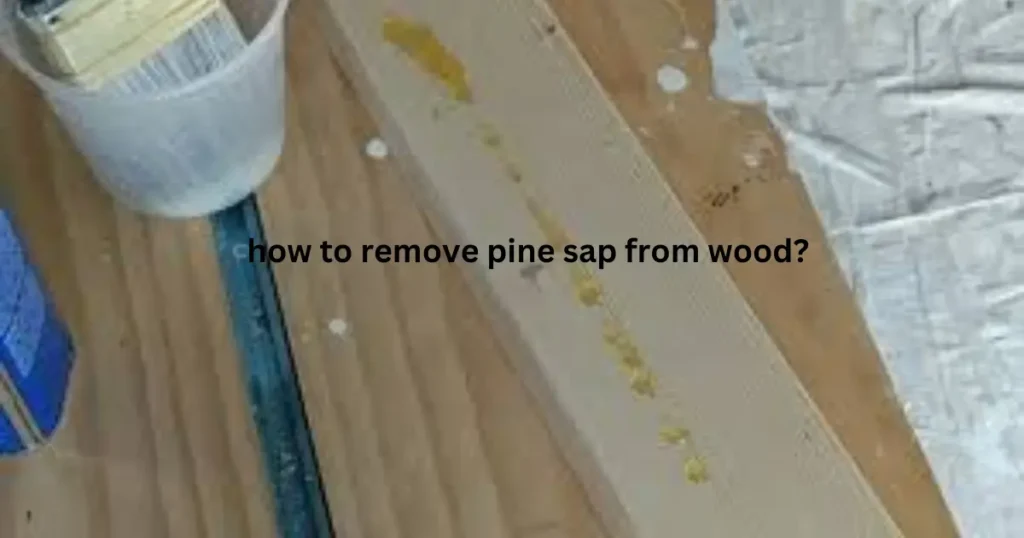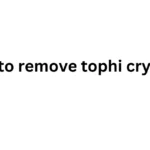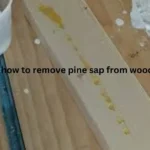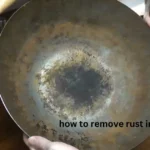Imagine this: you’re enjoying a beautiful day in the woods, the sun is shining, birds are singing, and you lean against a pine tree. Later, you realize you’ve got a sticky souvenir – pine sap clinging stubbornly to your clothes or worse, your favorite wooden furniture.
Don’t worry, it happens to the best of us! Pine sap can be a real pain to remove, but with the right approach, you can get rid of it without damaging your belongings. This guide will show you how to remove pine sap from wood using simple, effective methods.
Understanding the Sticky Situation: What is Pine Sap?
Before we get into the cleaning methods, it’s helpful to understand what we’re dealing with. Pine sap is a sticky, resinous substance produced by pine trees. Think of it as the tree’s blood! It flows through the tree, carrying nutrients and helping to protect it from insects and diseases.
When sap oozes out of a tree and comes into contact with a surface like wood, it hardens and becomes incredibly sticky. This makes it difficult to remove with just soap and water. But don’t worry, there are several ways to tackle this sticky problem!
How to Remove Pine Sap from Wood: Effective Methods
Here are some tried-and-true methods to remove pine sap from wood, using common household items:
Freezing
This method works well for items that can be easily placed in a freezer, like small wooden toys or decorative items.
- Chill Out: Place the item with pine sap in the freezer for at least an hour. The cold temperature will harden the sap, making it brittle.
- Scrape Away: Once the sap is hard, gently scrape it off using a plastic scraper, a dull knife, or even your fingernail. Be careful not to scratch the wood surface.
Rubbing Alcohol
Rubbing alcohol is a great solvent for dissolving pine sap.
- Soak a Cloth: Dampen a clean cloth with rubbing alcohol.
- Test First: Before applying to the affected area, test the alcohol on an inconspicuous spot to ensure it doesn’t damage the wood finish.
- Apply and Rub: Gently rub the sap with the alcohol-dampened cloth. The sap should start to dissolve and come off.
- Wipe Clean: Use a clean, damp cloth to wipe away the dissolved sap and alcohol residue.
Peanut Butter
Believe it or not, the oils in peanut butter can help break down pine sap!
- Apply Peanut Butter: Spread a thick layer of peanut butter over the sap.
- Let it Sit: Leave the peanut butter on for at least 30 minutes to an hour, allowing the oils to work their magic.
- Wipe it Off: Use a clean cloth or paper towel to wipe away the peanut butter and the softened sap.
- Clean the Area: Wash the area with soap and water to remove any oily residue.
Commercial Sap Removers
If you’re dealing with a particularly stubborn sap stain, you can try a commercial sap remover. These products are specifically designed to dissolve sap and are available at most hardware or auto parts stores.
- Choose the Right Product: Look for a sap remover that is safe for use on wood.
- Follow Instructions: Always follow the manufacturer’s instructions carefully.
- Ventilate the Area: Work in a well-ventilated area as some sap removers may have strong fumes.
Heat Method
This method uses heat to soften the sap, making it easier to remove.
- Apply Heat: Use a hairdryer on a low heat setting to warm the sap. Keep the hairdryer moving to avoid overheating the wood.
- Wipe Away: As the sap softens, gently wipe it away with a clean cloth.
- Repeat if Needed: You may need to repeat the process a few times to remove all the sap.
Important Note: When using heat, be extremely cautious to avoid burning the wood or causing any damage.
Preventing Pine Sap Stains on Wood
Prevention is always better than cure! Here are a few tips to avoid getting pine sap on your wood surfaces in the first place:
- Avoid Contact: Be mindful when around pine trees and avoid leaning or placing items against them.
- Protective Covers: Cover outdoor wooden furniture with protective covers or tablecloths when not in use.
- Regular Cleaning: Regularly clean your wooden furniture and decks to prevent sap buildup.
Choosing the Right Removal Method
With several methods available, how do you choose the best one for your situation? Here’s a quick guide:
| Method | Best For | Considerations |
|---|---|---|
| Freezing | Small items | Item must be freezer-safe |
| Rubbing Alcohol | Most surfaces | Test on an inconspicuous area first |
| Peanut Butter | Small to medium stains | May require some scrubbing |
| Commercial Sap Remover | Stubborn stains | Follow product instructions carefully |
| Heat Method | Small stains | Use caution to avoid heat damage |
Removing Pine Sap from Wood Finishes
It’s important to be extra careful when removing pine sap from wood with a finish (like varnish or paint). Some methods, like harsh chemicals or excessive scrubbing, can damage the finish.
- Gentle Approach: Always start with the gentlest method (like freezing or peanut butter) and move to stronger methods only if needed.
- Test in a Hidden Area: Always test any cleaning method on a hidden area of the wood first to check for any adverse reactions.
- Protect the Finish: After removing the sap, you may want to apply a furniture polish or wax to help restore the shine and protect the finish.
How to Remove Pine Sap from Wood Decks
Wooden decks are particularly susceptible to pine sap stains. Here are some tips for tackling sap on your deck:
- Identify the Sap: Make sure the stain is indeed pine sap and not another substance like tree resin or bird droppings.
- Clean the Deck: Before treating the sap stain, clean the entire deck surface to remove any dirt or debris.
- Choose Your Method: Depending on the severity of the stain, you can use any of the methods mentioned above. For large areas, a commercial sap remover or a pressure washer (used carefully) may be effective.
- Protect Your Deck: After removing the sap, consider applying a deck sealant to protect the wood from future stains.
Summary: Tackling the Sticky Problem with Confidence
Pine sap can be a nuisance, but it doesn’t have to ruin your day or your belongings. By understanding what pine sap is and how to remove it effectively, you can tackle this sticky situation with confidence.
Remember to choose the method that best suits your needs and always test it in an inconspicuous area first. With a little patience and the right approach, you can get rid of pine sap and keep your wood surfaces looking their best.
FAQs: How to Remove Pine Sap from Wood
Can I use Goo Gone to remove pine sap from wood?
Yes, Goo Gone is a commercial adhesive remover that can be effective for removing pine sap. However, always test it on a hidden area first, as it may damage some wood finishes.
Will vinegar remove pine sap from wood?
Vinegar is a natural cleaner, but it may not be strong enough to remove hardened pine sap. You can try it, but be prepared to use another method if it doesn’t work.
How do you get pine sap off wood without damaging the finish?
Start with the gentlest methods like freezing or peanut butter. If those don’t work, try rubbing alcohol or a commercial sap remover, but always test in a hidden area first.
How do you remove old, dried pine sap from wood?
Old, dried sap can be more challenging to remove. You may need to soften it with heat (using a hairdryer) or a commercial sap remover before trying to scrape or wipe it off.
Is it safe to use WD-40 to remove pine sap from wood?
While WD-40 can be effective for removing sap, it’s not recommended for use on wood as it can damage the finish. It’s better to use one of the other methods mentioned above.






